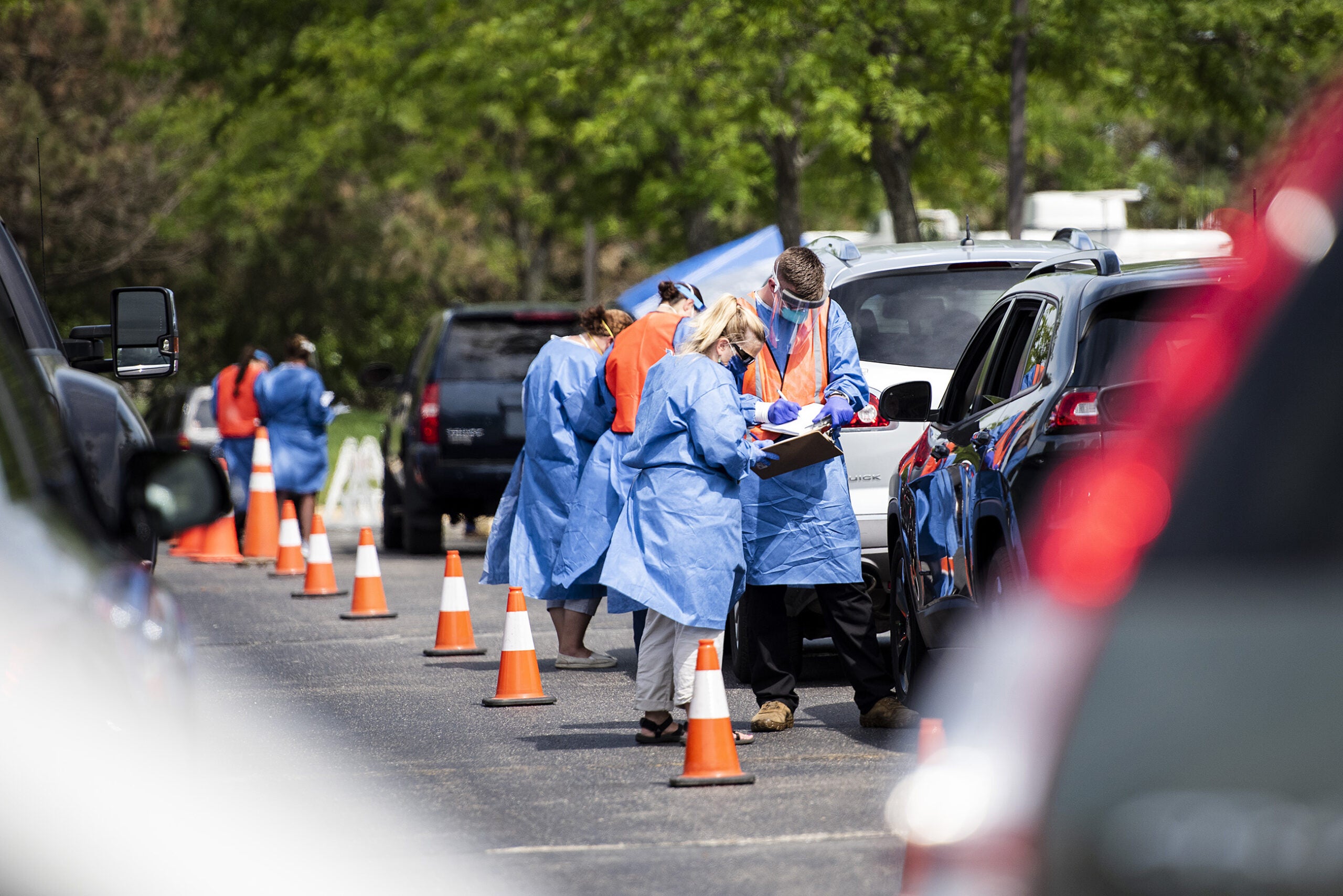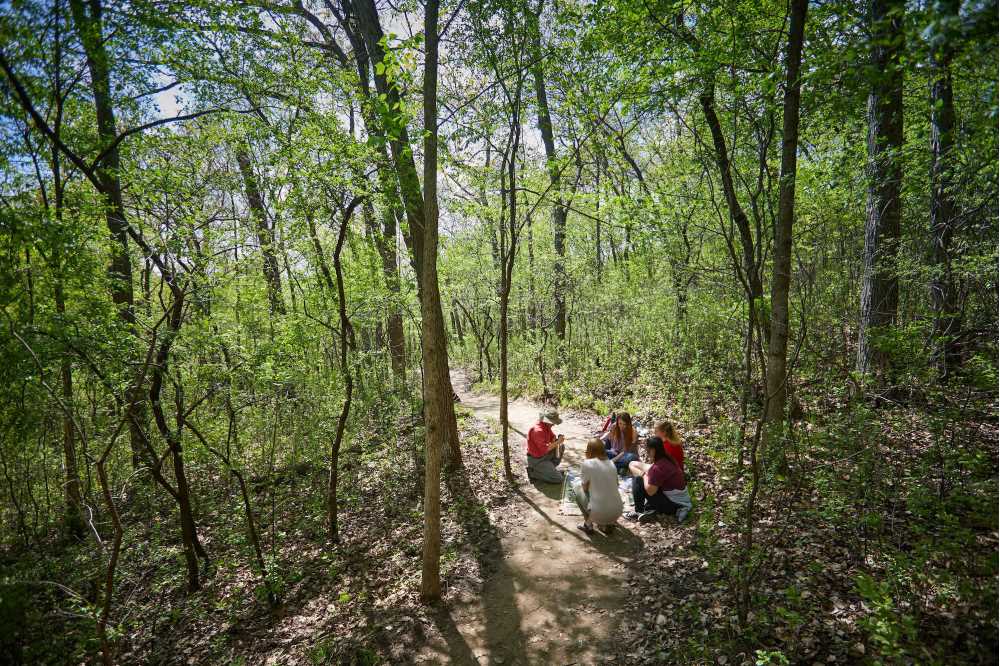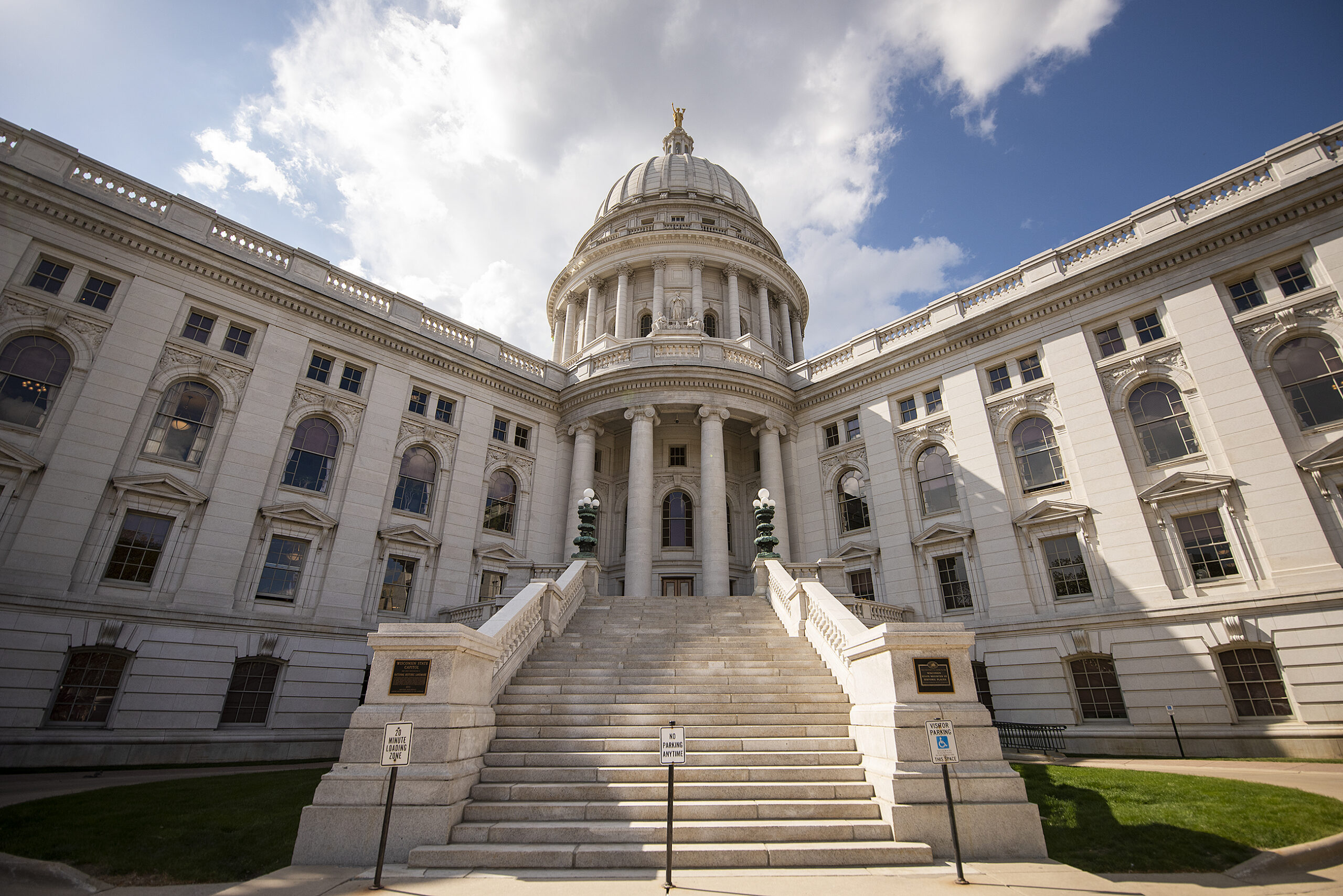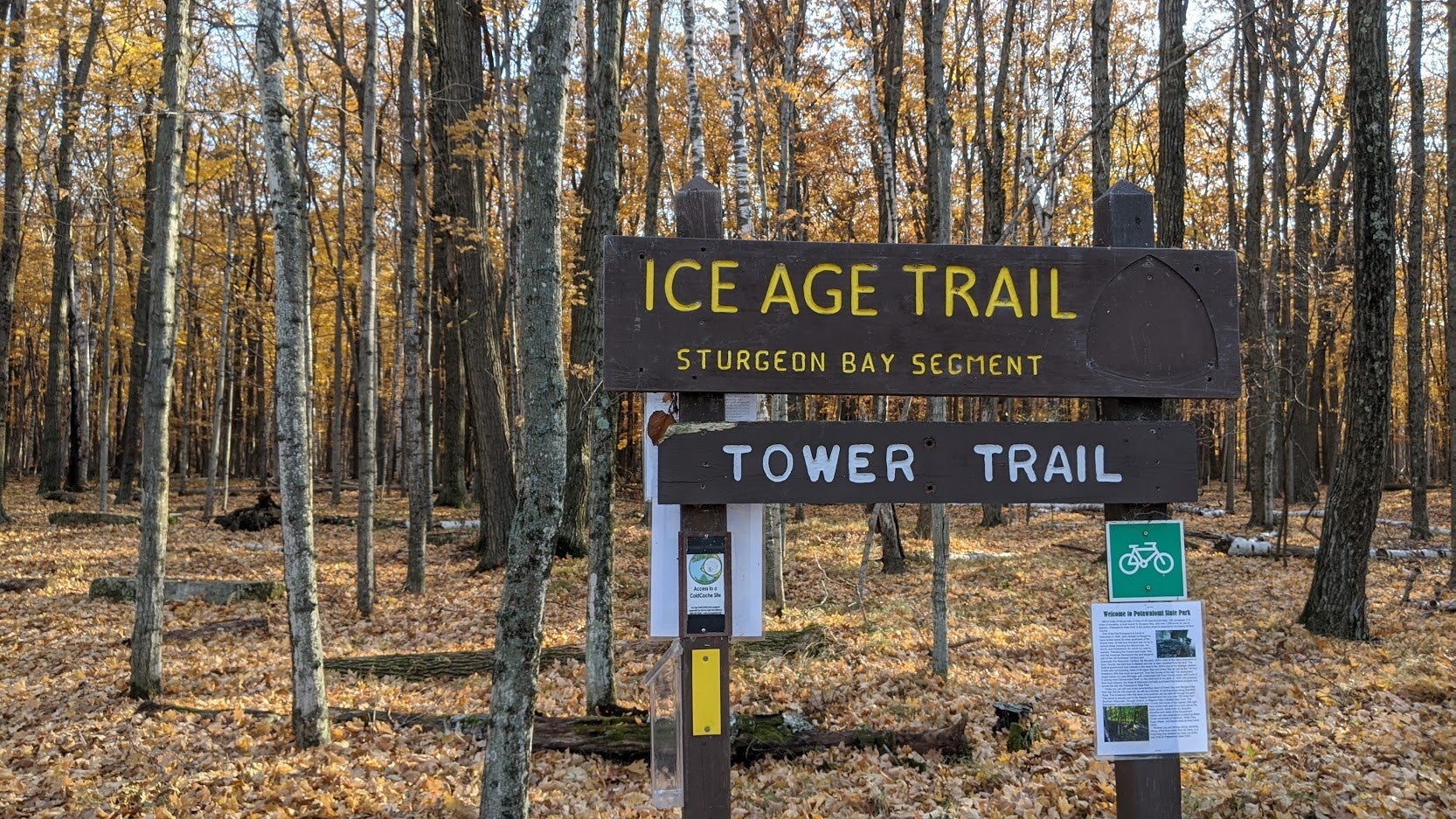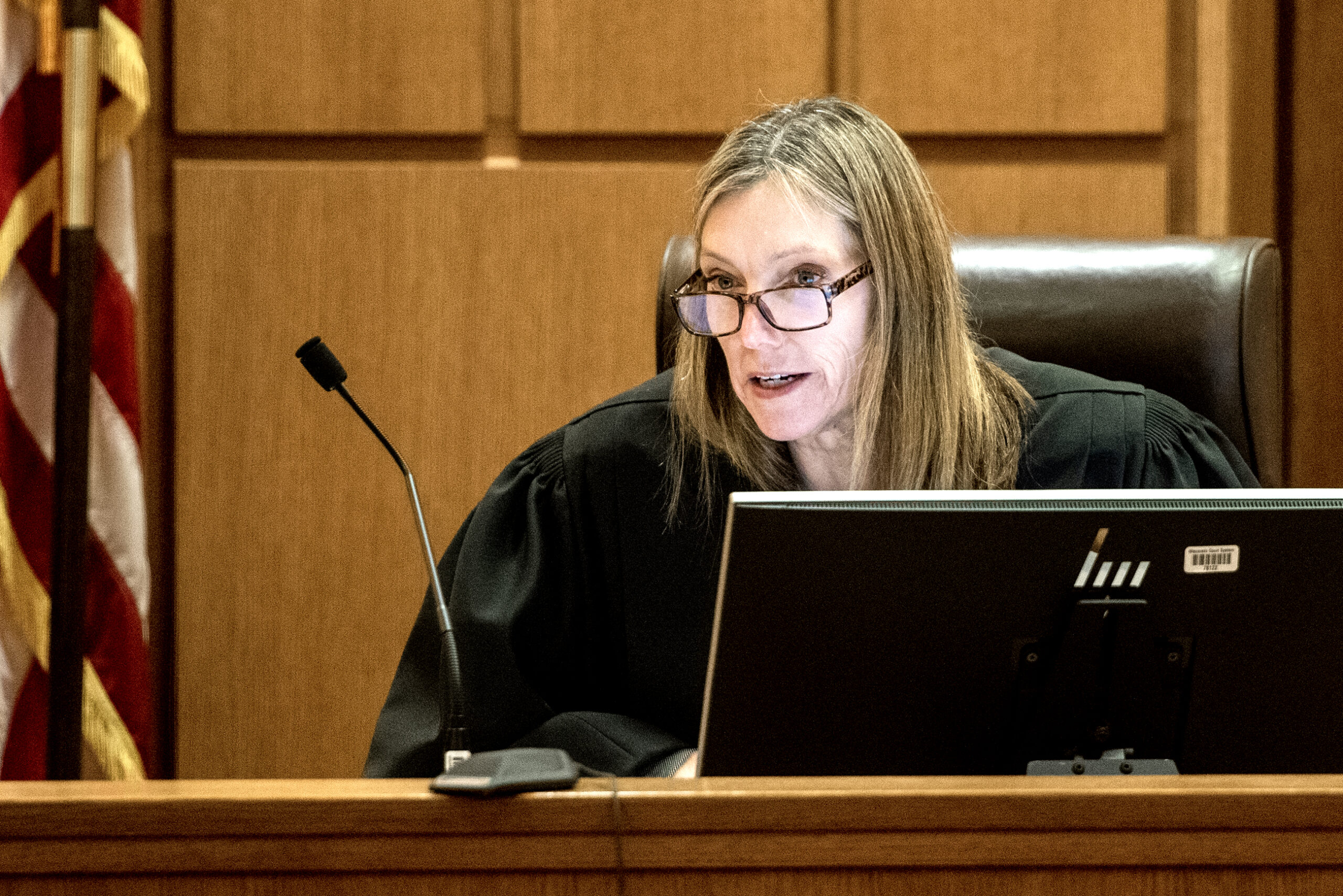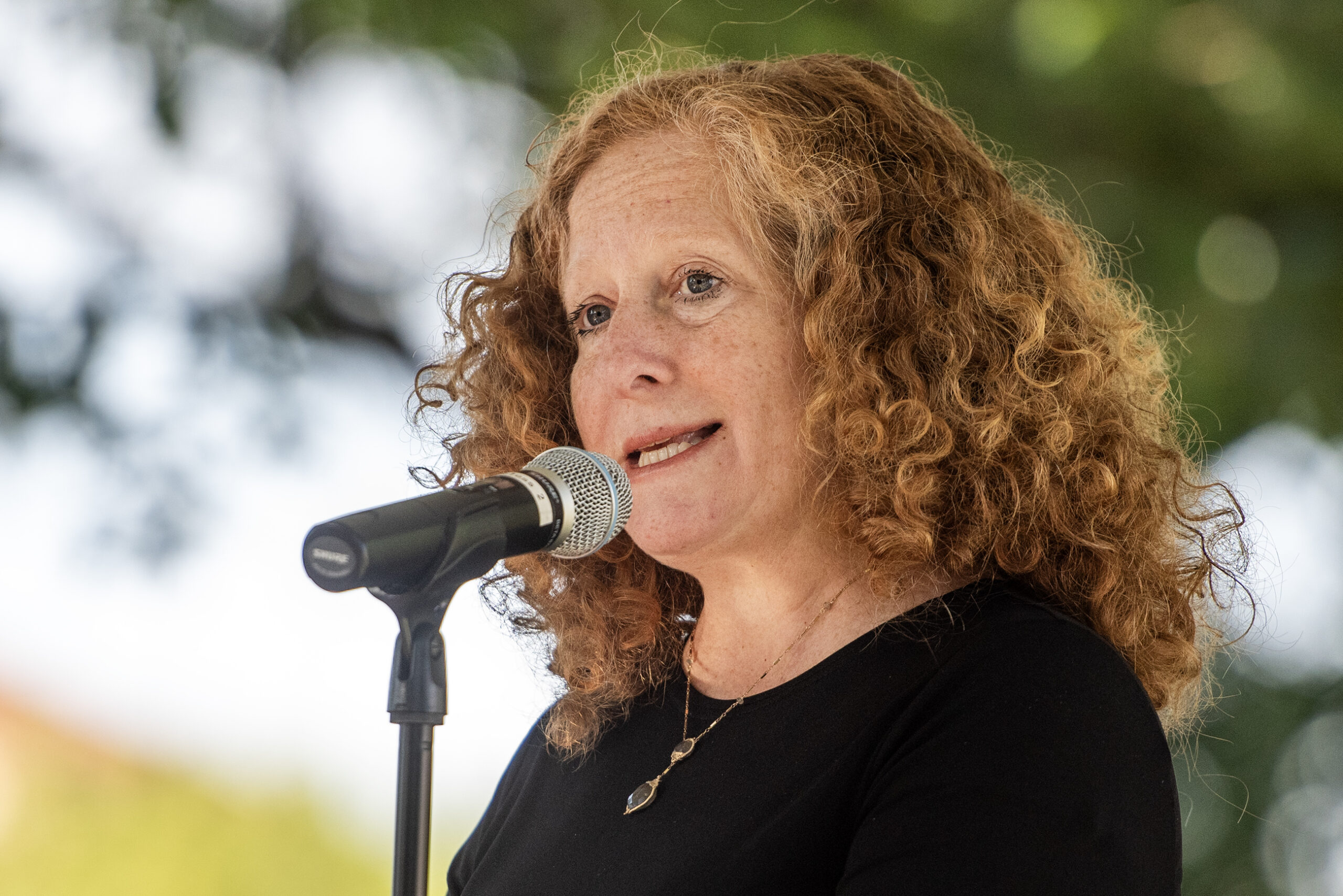Fourteen years ago, the health officer in Marathon County spent the better part of a year creating a pandemic preparedness plan. She worked with 13 neighboring counties and two tribal health organizations.
The possibility of a pandemic seemed remote, even to the officer, Julie Willems Van Dijk. But in the wake of the terrorist attacks of Sept. 11, her department had received Homeland Security funding intended to help prepare against biological terrorism and other public health threats. And she believed in being prepared.
In April of 2006, Willems Van Dijk gathered with health officials, law enforcement and local media in Wausau to conduct an exercise. They discussed the way public officials would disseminate information about the pandemic. Representatives from hospitals practiced conducting mass vaccinations, giving flu shots to 400 county employees and their families that day. The idea of the exercise was to practice and plan for what would happen if, someday, there were a real pandemic.
Stay informed on the latest news
Sign up for WPR’s email newsletter.
In a 2006 story broadcast by Wisconsin Public Radio, Willems Van Dijk explained what it would mean to have an infectious disease spreading that no one on Earth is immune to. She offered some of the oldest and still most effective public health advice there is: “Stay home.”
“Especially before there’s a vaccine, stay home. The less contact you have with other people, the lower likelihood you’re going to come in contact with someone who’s sick,” she said.
Viewed from 2020, the news coverage of the event is a peculiar time capsule. It’s a reminder that while COVID-19 is like nothing the world has seen in more than a century, it’s not the case that no one saw it coming. Public health officials at all levels have been thinking about — and warning against — the risk of pandemic for decades.
A look at some of those plans now shows that experts have long understood the potential of a new infectious disease to upend our lives. However, they may not have anticipated some social and political factors that have shaped the response to COVID-19. As the pandemic worsens in Wisconsin and in much of the nation, in many cases the advice of public health experts on fighting coronavirus still hasn’t been adopted.
Willems Van Dijk would leave her Marathon County position in 2009 to work with the University of Wisconsin-Madison Population Health Institute. In 2019, she became deputy director of Wisconsin’s Department of Health Services — just in time to be one of the top officials managing the state’s pandemic response.
[[{“fid”:”1154621″,”view_mode”:”full_width”,”fields”:{“format”:”full_width”,”alignment”:””,”field_image_caption[und][0][value]”:”%3Cp%3ENorthern%20Wisconsin%20county%20officials%20meet%20with%20Julie%20Willems%20Van%20Dijk%2C%20deputy%20secretary%20for%20the%20Wisconsin%20Department%20of%20Health%20Services.%26nbsp%3B%3Cem%3EDanielle%20Kaeding%2FWPR%3C%2Fem%3E%3C%2Fp%3E%0A”,”field_image_caption[und][0][format]”:”full_html”,”field_file_image_alt_text[und][0][value]”:”Northern Wisconsin county officials meet with Julie Willems Van Dijk”,”field_file_image_title_text[und][0][value]”:”Northern Wisconsin county officials meet with Julie Willems Van Dijk”},”type”:”media”,”field_deltas”:{“1”:{“format”:”full_width”,”alignment”:””,”field_image_caption[und][0][value]”:”%3Cp%3ENorthern%20Wisconsin%20county%20officials%20meet%20with%20Julie%20Willems%20Van%20Dijk%2C%20deputy%20secretary%20for%20the%20Wisconsin%20Department%20of%20Health%20Services.%26nbsp%3B%3Cem%3EDanielle%20Kaeding%2FWPR%3C%2Fem%3E%3C%2Fp%3E%0A”,”field_image_caption[und][0][format]”:”full_html”,”field_file_image_alt_text[und][0][value]”:”Northern Wisconsin county officials meet with Julie Willems Van Dijk”,”field_file_image_title_text[und][0][value]”:”Northern Wisconsin county officials meet with Julie Willems Van Dijk”}},”link_text”:false,”attributes”:{“alt”:”Northern Wisconsin county officials meet with Julie Willems Van Dijk”,”title”:”Northern Wisconsin county officials meet with Julie Willems Van Dijk”,”class”:”media-element file-full-width”,”data-delta”:”1″}}]]
There’s something surreal, even to her, about listening to the way she discussed a hypothetical pandemic a decade and a half ago.
“Some of those phrases I used in 2006, I’ve used every day since this pandemic erupted,” she said in an interview.
Many of the tools and practices for fighting a pandemic identified in 2006 remain the same. Without a vaccine or effective treatment, those include staying home, maintaining social distances, wearing cloth face coverings and practicing good hand hygiene when it’s not possible to stay home.
“The tools we have in our toolbox to slow the spread of this disease are extremely limited,” said Stephanie Smiley of DHS’ Division of Public Health.
But as clear as that advice is on paper, putting it into practice is very different.
“You can go through drills. You can have different types of paper exercises. You can have even a full-scale exercise,” said Dr. Susan Turney, CEO of Marshfield Clinic. “But when it’s real, the dynamics do change.”
Willems Van Dijk said she’s experienced the difference for herself every day for the last five months.
“I’m sitting here talking calmly to you,” Willems Van Dijk said. “But this has been like nothing public health practitioners have ever faced.“
‘People Very Much Anticipated This’
In September 2019, public health officials at the Johns Hopkins University Center for Health Security published a paper on global readiness for a pandemic. The paper, which drew from the responses to the Ebola and H1N1 viruses, as well as from reams of data and research on the global health system, was titled “Preparedness for a High-Impact Respiratory Pathogen Pandemic.”
“The lack of global attention on and consideration of this threat,” the report said, “speaks to the urgency of addressing preparedness for epidemics and pandemics that might be caused by high-impact respiratory pathogens.”
The report’s conclusion that the world was not ready for a pandemic virus of this sort has turned out to be true, said epidemiologist Jennifer Nuzzo, its lead author, and a leading voice on the U.S. response to the coronavirus.
“There has been a community out there who has been working on the issue for decades,” Nuzzo said. “Some of the narrative has been, ‘Well, we couldn’t really anticipate this.’ No. People very much anticipated this.”
It’s not just that leaders didn’t listen to warnings before a pandemic broke out, Nuzzo said. Even after the COVID-19 pandemic began, they didn’t take action.
When Nuzzo testified before Congress in February, she warned that “the virus is spreading too quickly and too quietly for us to possibly know where all cases are.” She told Congress the U.S. should focus on bolstering health departments’ capabilities to test and trace cases; it should ensure that workers could be supplied with personal protective equipment; and it should begin immediately to develop ways of diagnosing, treating and vaccinating against the new virus.
But a federal response didn’t follow. In many ways, she said, it still hasn’t.
“We are now in a worse state than we were in mid-March,” Nuzzo said. “The case numbers now are higher than they’ve ever been, and we very much know how challenging this virus is. We have now had multiple months of living with the horrors of this virus, and we’re still not acting.”
[[{“fid”:”1300081″,”view_mode”:”embed_portrait”,”fields”:{“format”:”embed_portrait”,”alignment”:”right”,”field_image_caption[und][0][value]”:”%3Cp%3EJennifer%20Nuzzo.%20%3Cem%3EPhoto%20courtesy%20of%20the%20Center%20for%20Health%20Security%20at%20Johns%20Hopkins%20University%3C%2Fem%3E%3C%2Fp%3E%0A”,”field_image_caption[und][0][format]”:”full_html”,”field_file_image_alt_text[und][0][value]”:”Jennifer Nuzzo”,”field_file_image_title_text[und][0][value]”:”Jennifer Nuzzo”},”type”:”media”,”field_deltas”:{“2”:{“format”:”embed_portrait”,”alignment”:”right”,”field_image_caption[und][0][value]”:”%3Cp%3EJennifer%20Nuzzo.%20%3Cem%3EPhoto%20courtesy%20of%20the%20Center%20for%20Health%20Security%20at%20Johns%20Hopkins%20University%3C%2Fem%3E%3C%2Fp%3E%0A”,”field_image_caption[und][0][format]”:”full_html”,”field_file_image_alt_text[und][0][value]”:”Jennifer Nuzzo”,”field_file_image_title_text[und][0][value]”:”Jennifer Nuzzo”}},”link_text”:false,”attributes”:{“alt”:”Jennifer Nuzzo”,”title”:”Jennifer Nuzzo”,”class”:”media-element file-embed-portrait media-wysiwyg-align-right”,”data-delta”:”2″}}]]
The U.S. will likely see severe testing shortages in parts of the country, “because we never actually fixed that problem, we just used some duct tape and bubble gum to plug the holes,” Nuzzo said. There will also likely be renewed challenges stocking personal protective equipment. The U.S. didn’t have a national strategy to address those shortfalls, and a state-by-state response to mandatory closures left open many avenues for the virus to spread.
“The challenges we’ve gone through as a nation aren’t unique to the U.S.,” Nuzzo said. “Other countries had similar struggles in the beginning. But they fixed them. And now they are in a much better situation than the U.S. is.”
Very few pandemic preparedness plans contemplated how politicized public health measures would become in the midst of the response. In Wisconsin, the state Supreme Court threw out a statewide stay-at-home order in May, ruling that such a plan would need to go through the Legislature. At the time, Republican legislative leaders said Gov. Tony Evers, a Democrat, should provide guidance “in case COVID-19 reoccurs in a more aggressive way.”
In the last week, Wisconsin has repeatedly broken its own records for the highest number of new cases recorded in a day, and the state’s percentage of positive tests and its number of hospitalizations are climbing. The Legislature has not convened, and there’s no movement to allow the governor to enact new statewide restrictions.
That’s made Wisconsin’s policy for fighting the virus, like the national one, a patchwork of different approaches. Milwaukee and Dane County have adopted mandatory face mask policies, and Dane County closed indoor bars. But most places in the state have no restrictions, and the virus continues to spread outside the state’s most populous cities.
[[{“fid”:”1300086″,”view_mode”:”full_width”,”fields”:{“format”:”full_width”,”alignment”:””,”field_image_caption[und][0][value]”:”%3Cp%3EOwner%20Paul%20Furrer%20cuts%20the%20hair%20of%20Jeff%20Jones%20at%20Rich’s%20Barber%20Shop%20on%20Thursday%2C%20May%2014%2C%202020%2C%20in%20Waukesha%2C%20Wisconsin%2C%20after%20the%20store%20re-opened%20following%20the%20Wisconsin%20Supreme%20Court%20decision%20to%20strike%20down%20Gov.%20Tony%20Evers’%20stay-at-home%20order.%20%3Cem%3EMorry%20Gash%2FAP%20Photo%3C%2Fem%3E%3C%2Fp%3E%0A”,”field_image_caption[und][0][format]”:”full_html”,”field_file_image_alt_text[und][0][value]”:”Man gets his hair cut in Waukesha “,”field_file_image_title_text[und][0][value]”:”Man gets his hair cut in Waukesha “},”type”:”media”,”field_deltas”:{“3”:{“format”:”full_width”,”alignment”:””,”field_image_caption[und][0][value]”:”%3Cp%3EOwner%20Paul%20Furrer%20cuts%20the%20hair%20of%20Jeff%20Jones%20at%20Rich’s%20Barber%20Shop%20on%20Thursday%2C%20May%2014%2C%202020%2C%20in%20Waukesha%2C%20Wisconsin%2C%20after%20the%20store%20re-opened%20following%20the%20Wisconsin%20Supreme%20Court%20decision%20to%20strike%20down%20Gov.%20Tony%20Evers’%20stay-at-home%20order.%20%3Cem%3EMorry%20Gash%2FAP%20Photo%3C%2Fem%3E%3C%2Fp%3E%0A”,”field_image_caption[und][0][format]”:”full_html”,”field_file_image_alt_text[und][0][value]”:”Man gets his hair cut in Waukesha “,”field_file_image_title_text[und][0][value]”:”Man gets his hair cut in Waukesha “}},”link_text”:false,”attributes”:{“alt”:”Man gets his hair cut in Waukesha “,”title”:”Man gets his hair cut in Waukesha “,”class”:”media-element file-full-width”,”data-delta”:”3″}}]]
Brad Karger was Marathon County administrator in 2006, and he was Willems Van Dijk’s boss when she produced the plan. He said they had “no clue” about the political implications of shutting down businesses in a pandemic or taking other protective measures.
“I think we were naive,” Karger said. “Nothing like shutting down the economy had ever been tried in our life experience.”
Nuzzo said credible, fact-based messages may not ever be sufficient to counter political leaders determined not to take public health advice.
“You hire an epidemiologist for their expertise, but you don’t elect them to lead the country,” Nuzzo said. “I don’t think we can ever truly combat politics.”
COVID-19 May Bring About Permanent Changes
[[{“fid”:”1300096″,”view_mode”:”full_width”,”fields”:{“format”:”full_width”,”alignment”:””,”field_image_caption[und][0][value]”:”%3Cp%3EVoters%20masked%20against%20coronavirus%20line%20up%20at%20Riverside%20High%20School%20for%20Wisconsin’s%20primary%20election%20Tuesday%20April%207%2C%202020%2C%20in%20Milwaukee.%20%3Cem%3EMorry%20Gash%2FAP%20Photo%3C%2Fem%3E%3C%2Fp%3E%0A”,”field_image_caption[und][0][format]”:”full_html”,”field_file_image_alt_text[und][0][value]”:”Voters masked against coronavirus line up at Riverside High School for Wisconsin’s primary election Tuesday April 7, 2020, in Milwaukee.”,”field_file_image_title_text[und][0][value]”:”Voters masked against coronavirus line up at Riverside High School for Wisconsin’s primary election Tuesday April 7, 2020, in Milwaukee.”},”type”:”media”,”field_deltas”:{“4”:{“format”:”full_width”,”alignment”:””,”field_image_caption[und][0][value]”:”%3Cp%3EVoters%20masked%20against%20coronavirus%20line%20up%20at%20Riverside%20High%20School%20for%20Wisconsin’s%20primary%20election%20Tuesday%20April%207%2C%202020%2C%20in%20Milwaukee.%20%3Cem%3EMorry%20Gash%2FAP%20Photo%3C%2Fem%3E%3C%2Fp%3E%0A”,”field_image_caption[und][0][format]”:”full_html”,”field_file_image_alt_text[und][0][value]”:”Voters masked against coronavirus line up at Riverside High School for Wisconsin’s primary election Tuesday April 7, 2020, in Milwaukee.”,”field_file_image_title_text[und][0][value]”:”Voters masked against coronavirus line up at Riverside High School for Wisconsin’s primary election Tuesday April 7, 2020, in Milwaukee.”}},”link_text”:false,”attributes”:{“alt”:”Voters masked against coronavirus line up at Riverside High School for Wisconsin’s primary election Tuesday April 7, 2020, in Milwaukee.”,”title”:”Voters masked against coronavirus line up at Riverside High School for Wisconsin’s primary election Tuesday April 7, 2020, in Milwaukee.”,”class”:”media-element file-full-width”,”data-delta”:”4″}}]]
In early June, when coronavirus cases were declining in Wisconsin, Willems Van Dijk cautioned that the pandemic was not over.
“I am haunted by the disease curves I see from the Spanish influenza pandemic 100 years ago,” she said, “that had a spike in the spring, a quiet summer and the most deadly spike in the fall.”
As it turned out, the decline in June was temporary, and summer hasn’t been quiet. What the fall and beyond has in store is unknown.
Health officials see few bright spots in COVID-19 pandemic response. But they say some measures people and local governments are implementing have the possibility to become permanent changes for the better. People may come out of the pandemic with a greater understanding of the importance of staying home when they’re sick to avoid spreading disease to others. Social acceptance of mask-wearing, which public opinion surveys show is increasing markedly, will also help slow the spread of COVID-19 and, in the future, influenza and other common illnesses.
“I do see hope in the way local communities are pushing up their sleeves and trying to figure out how to make things happen,” Nuzzo said. “Local communities have extraordinary power to overcome a lack of leadership.”
Alison Page, CEO at Western Wisconsin Health, said she wants COVID-19 to lead to “an awakening around this country about the value of public health,” and a deeper understanding of why social determinants of health — that is, the conditions in the places where people live, learn, work and play — affect everything from the transmission of diseases to obesity rates and school test scores.
For her part, Willems Van Dijk said “people are going to think a whole lot differently about disease transmission, and steps they can take to protect themselves.”
“If we’re all better at good hand hygiene, and stay home when we’re sick, and wear face masks, we can reduce transmission of a lot of other things too,” Willems Van Dijk said.
She said planning for a pandemic before one arrived showed her that it makes sense to center plans around those core principles of staying home when possible to prevent transmission, promoting hand-washing, face coverings and social distancing when going out. Those principles, she said, “will get you 80 to 90 percent of the way.”
“But then, beware,” she said. “Because you’re going to have to customize your plan.”
Wisconsin Public Radio, © Copyright 2024, Board of Regents of the University of Wisconsin System and Wisconsin Educational Communications Board.

